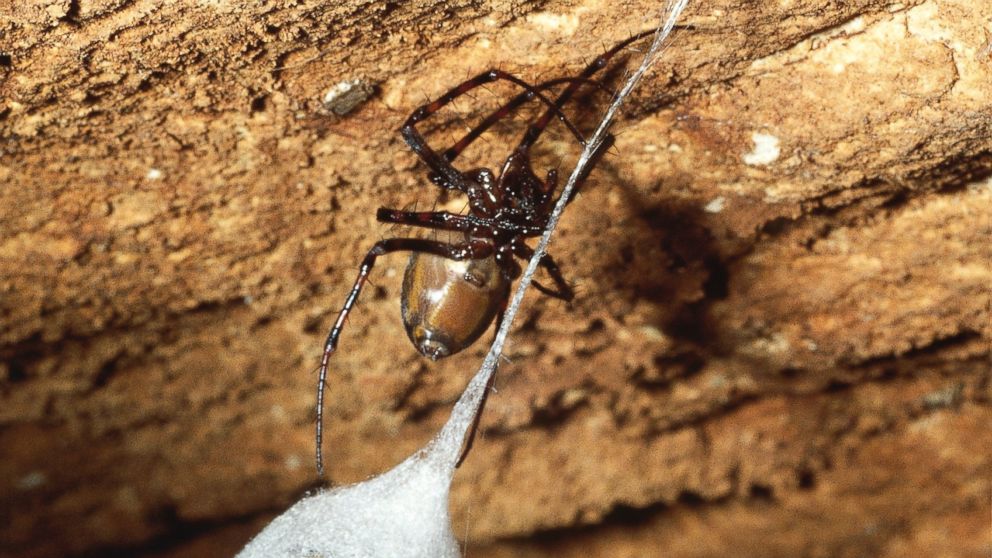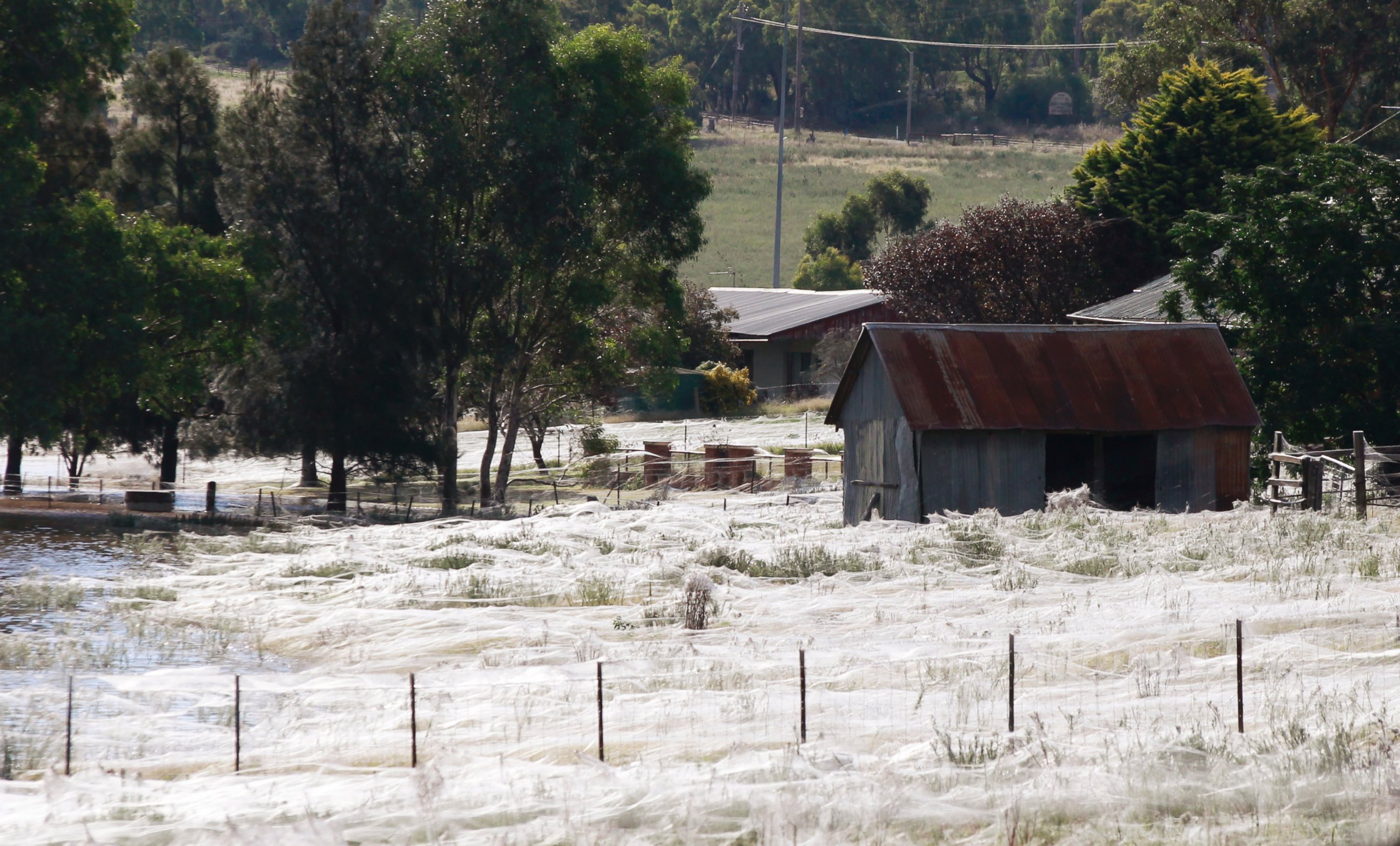When Baby Spiders Rain Down From the Sky: Witness Describes Amazing Phenomenon
Spiders fall from the sky, taking over a town in Australia.

— -- Countless spiders falling from the sky blanketed areas near a town in Australia this month, and one man described the spooky spectacle that may be a horror to some but a natural wonder to others.
“I saw strands of spider web floating everywhere in the sky,” Goulburn resident Ian Watson told ABC News in an email. “My house was covered in them. ... My car, clothes line, children’s swing set, fence, motorbike and TV antenna all had numerous strands of web on them.”
Watson, who lives on a farm about 10 minutes out of the town, located about 125 miles southwest of Sydney, said the eerie incident first happened May 4, and then again on May 17, but to a lesser extent.
“I was just wondering what on earth was going on, and why is this happening?” Watson said. “I thought it was amazing and beautiful, but then wondered what could have triggered the event as I had never seen this in such numbers.”

The display, while uncommon, wasn't a total surprise to experts.
"It's a phenomenal event, but it’s not unprecedented,” said Rick Vetter, a retired research associate of entomology at the University of California, Riverside.
The main reason this happens is because of a dispersal technique called ballooning, Vetter told ABC News. Ballooning occurs after a mother spider lays her eggs and they hatch.
“[The babies] want space to themselves. You got 1,000 brothers and sisters sitting right around you. You’re not going to go close and make a web -- there’s too much competition,” Vetter said.
That’s when the babies climb off the ground to something like the top of a fence post, they release silk and the updraft carries them away.
For example, the crab spider, or Xysticus audax, exhibits behavior prior to ballooning in the video below.
While ballooning happens often, mass ballooning like the one reported in Australia doesn't. In cases like this, it’s multiple mothers, a big population of spiders, and maybe even more than one species, according to Mike Draney, an arachnologist and biology professor at the University of Wisconsin-Green Bay.
The weather plays a big factor in an event like this, Draney said.
“It can’t be too windy and there needs to be warm rising air currents,” he said.
Draney also pointed out that people most likely don’t have to worry about these baby spiders.
“Spiders can’t bite humans until they get to be a certain size,” Draney said. “When spiders are born, they’re small and can’t break human skin. I’d be very surprised to hear any ballooning spiders can bite.”
For Watson, it wasn't as much a feeling of horror as it was amazement, mixed in with bit of annoyance.
"It was a mixture of excitement and also appreciation of the wonders of nature," he said. "I wasn’t scared as the spiders were only small. If anything I was also slightly annoyed at the web being all over the washing that was on the line, plus you couldn’t go outside without getting web on you. It was getting in my beard and nearly everyone I know hates the feeling of having spider web on you."




